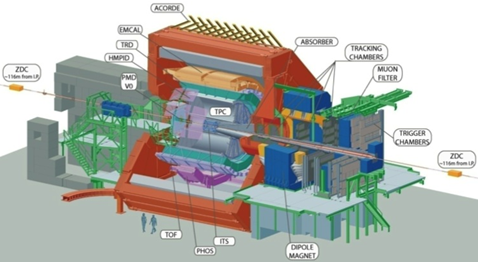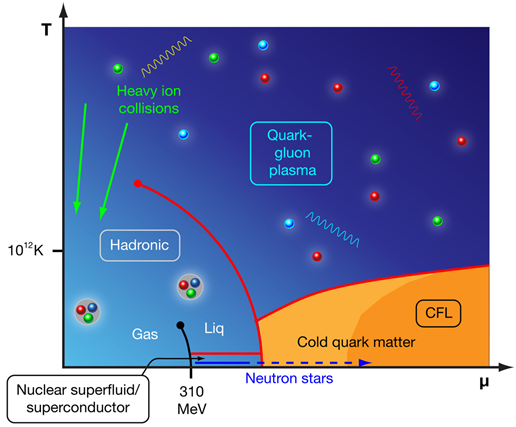|
Researchers: |
Position: |
|
M. Chartier (Team Leader) |
Professor |
|
J. Dainton |
Emeritus Professor |
|
R. Lemmon |
Visiting Senior Research Fellow |
|
J. Norman |
PhD Student |

Figure: The ALICE detector.
ALICE is a dedicated experiment using heavy-ion collisions at the LHC (CERN, Geneva) to produce strongly-interacting matter with the highest energy-densities ever created in the laboratory. As such it is the forefront experiment worldwide for these types of studies.
Nuclear matter can exist in different phases, analogous to the solid, liquid, gas and plasma phases in ordinary substances. By varying the temperature, density or pressure, nuclear matter can undergo a transition from one phase to another. Thermodynamic properties of nuclear matter and its phase transitions can be described by its equation of state. In extreme conditions of density and temperature (about 100 thousands times more than the temperature at the heart of the sun!), a phase transition should occur and quarks and gluons (of which the protons and neutrons are made of) should exist in a new state of matter called the Quark-Gluon Plasma. By colliding nuclei together at high energies, we study properties of this new state of matter. Such information is not only important for nuclear physics but also to understand neutron stars and other compact astrophysical objects.
Liverpool joined the ALICE Collaboration in July 2013. Our main physics activity is to use heavy flavour probes to understand the properties of the partonic matter produced and we are members of the Heavy Flavour Physics Working Group (HF-PWG). In particular we lead the analysis of charm baryons using data from the pp, pPb and PbPb runs.

This research programme will benefit strongly from the Inner Tracking System (ITS) Upgrade for ALICE, in which we are playing a leading role.